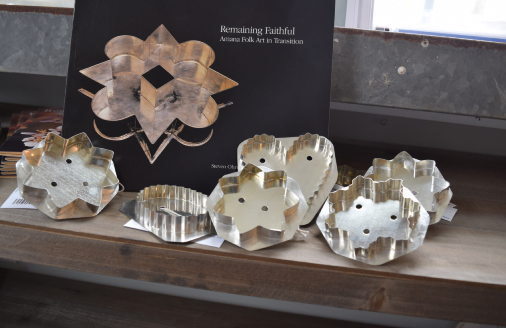
Until 1932 Amana was a communal organization based on self-sufficiency. Each of the seven villages had its own individual craftsmen and women who provided the people with baked goods, wagons, harnesses, furniture, woven goods, baskets, pottery, utilitarian woodwork and more. Here are just a few:
Tinsmithing
The tin shops were used primarily by the kitchens for ladles, kettles, colanders, pails, food baskets and so on. Tin shops also created items for industries, the meat markets and wash houses. The tinsmiths also made items for personal use.
Eventually, the tinsmith turned from craftsman to artisan, forming cookie cutters and cupcake molds for Christmas and Easter holidays. The craft of tinsmithing had all but disappeared from the Amanas. until in 1980 when William Metz revitalized the craft. Tinsnithing classes are presently offered through the Amana Arts Guild.
Basketmaking
Each Amana village had a basketmaker who was appointed by the church elders. Often he was an older member of the community who was no longer able to do physical labor.
There were three styles of baskets, among them was the coiled basket used in the bread baking process. These baskets were sprinkled with cracked wheat flour and used for the bread dough which was allowed to rise in the basket. Once the dough had risen, the baker would slide the dough out of the basket and onto the bread paddle. Out of the oven would come a three to five pound loaf.
Quilting
The Amana quilt has come a long way from the old German days. It is a craft that has been kept alive by people who recognized the worth of this art form, to preserve it for future generations.
Beginning in the late 1970’s Carrie Shoup helped set up quilting classes for the Amana Arts Guild. She has been recognized by the Iowa Arts Council, who had one of her rugs on tour with their Folk Art exhibit. Her work was also featured in the national magazine, Better Homes and Gardens.
